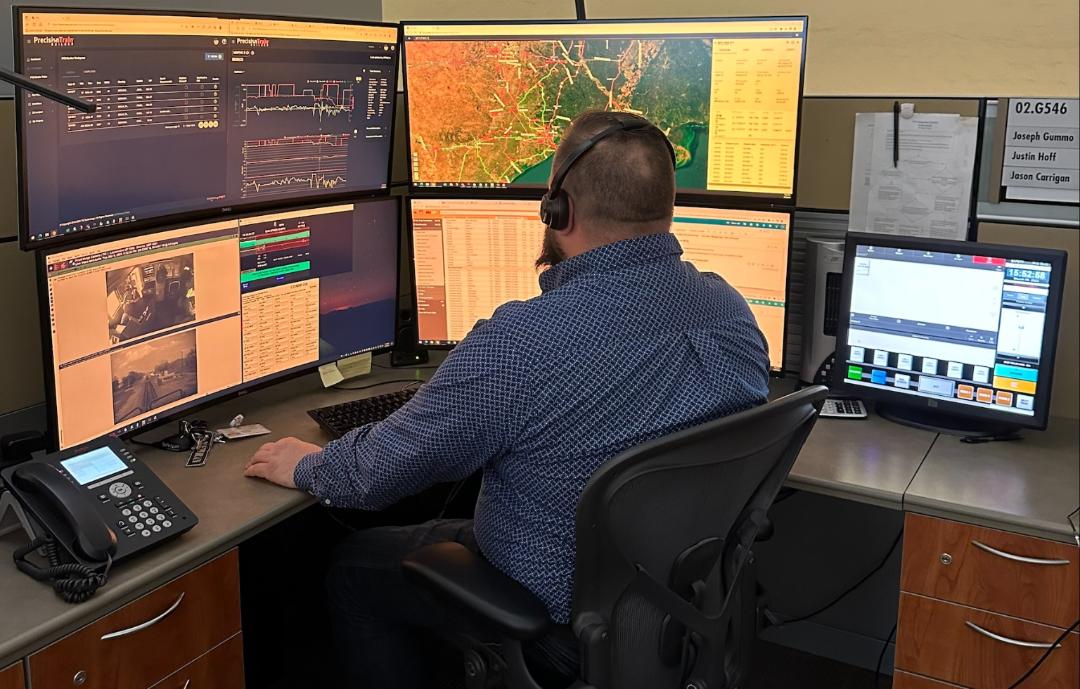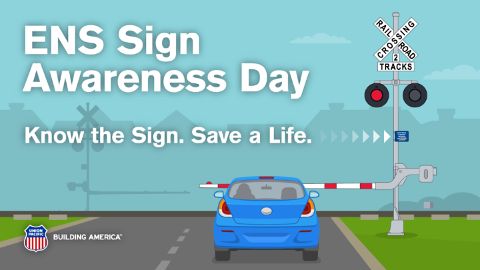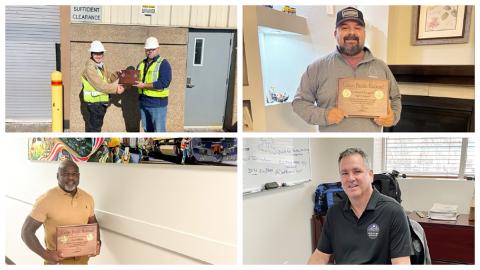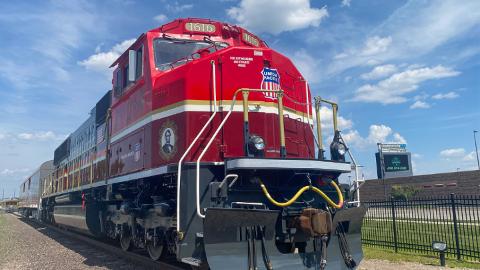Imagine an around-the-clock railroad command center with one central mission: To help trains operate safely and efficiently.
That’s exactly what we do at Union Pacific’s Operating Practices Command Center (OPCC). It was created in November 2019 as a 24/7 resource for ensuring safety protocols with local, federal and companywide standards across all our service units. Craft and management personnel receive accurate, consistent information about current rules and regulations, along with instant support from a team of 21 experts on safe train operations.
But in addition to being an information resource, the OPCC takes a proactive stance by using state-of-the-art technology to analyze unintended train stops across the network as well as perform recertifications and other annual requirements for all Union Pacific Class 1 employees.
Technology and Knowledge Power OPCC
One of the most important pieces of tech in the OPCC toolbox is Precision Train Builder – or PTB. This computer-based technology harnesses the physics associated with trains and train operation. In essence, PTB simulates trains and their operations over hundreds of miles of track compressed into minutes in an effort to identify excessive buff or draft forces within the train.
PTB accurately identifies not only where to place rail cars within a train, but how much “power” – i.e., locomotives – to use, and where to place that power within the train for the most efficient and safe operation. Simulations also are designed to rerun at lower speeds to see if a lower train speed will reduce forces to an acceptable level. For example, some simulations have shown that a speed reduction from 50 mph to 40 mph can reduce in-train forces by up to 40%.
OPCC can also monitor train crews in real time as they operate over their territory, providing alerts to slow down to reduce buff and draft forces when necessary. That function is called a Virtual Ride Along (VRA) and is being used to monitor thousands of UP trains on the company’s 32,000-mile network using live, inward- and outward-facing camera feeds and access to PTC screen and event-recorder data.
To help us safely grow our business, OPCC performs countless simulations to evaluate new business opportunities and T-Plan/blocking changes prior to implementation to help make sure a safe train enters our network. Tactically, non-standard train combination opportunities are simulated to determine if they’re safe to move, always following train makeup restrictions. And in addition to making a train’s locomotive placement recommendations to handle tonnage and minimizes in-train forces, PTB recommendations have been used to improve velocity on our priority trains, such as UPS trains.
PS Technology Provides State-of-the-art Training Resource
Since rolling out Precision Train Builder a few years ago, we’ve discovered innovative ways to apply the technology to our training efforts. Last year, we had locomotive simulators converted to PS Technology simulators and revamped our simulator program to complete all train employee recertification rides, which includes long-train training.
Any time a train stops for unintended reasons due to train handing -- say for a broken knuckle or drawbar – the employee behind the controls will come in for training. Simulators allow a streamlined way to reproduce the exact train along with the subdivision it was operating on. Future plans call for sharing the PTB Event Recorder Playback with the employee to better understand in-train forces that were involved. The more we understand the energy in the train, the better we will run the train to mitigate excessive forces that could result in derailments.
Applications Go Beyond Train Handling
But that’s just the beginning of how we’re using technology to make the OPCC more effective:
Track Maintenance – With video and event recorder data at our fingertips along with outward-facing camera feeds provided by the Virtual Ride Along tool, our Engineering Department can pinpoint reported potential rough track to exact locations. The technology can also show how the track’s condition impacted the train.
Train Diagnostics – The OPCC can help train crews diagnose if any locomotives they are operating aren’t performing at peak levels. This allows for the locomotive engineer to adjust his or her train handling.
Car Sequence Compliance – Early last year, OPCC began receiving alerts for hazardous rail cars out of sequence. The OPCC team will then notify crews with information to update their train consist with the proper placement. If there is a significant update to the train profile, the crew may update their information in PTC.
Break-in-Two Analysis – A “Break In Two” (BIT) is when a knuckle between rail cars breaks, separating a train. Since November 2019, OPCC has analyzed every BIT occurring on the Union Pacific. These events receive an immediate analysis, which provides the opportunity to issue near real-time feedback to various stakeholders. Feedback can include requiring a mechanical inspection, a reduced train speed, modifying train makeup or communicating train handling recommendations.
When looking for trends using BIT data, train makeup or permanent speed restrictions can be applied to specific trains or subdivisions to mitigate risk, including derailments.
And that’s just the beginning. Every day at the OPCC we discover new ways to apply technology to make our operations safer and more efficient. The team is proud of our role in the company’s mission of safely connecting our nation’s businesses and communities to each other and the world.







